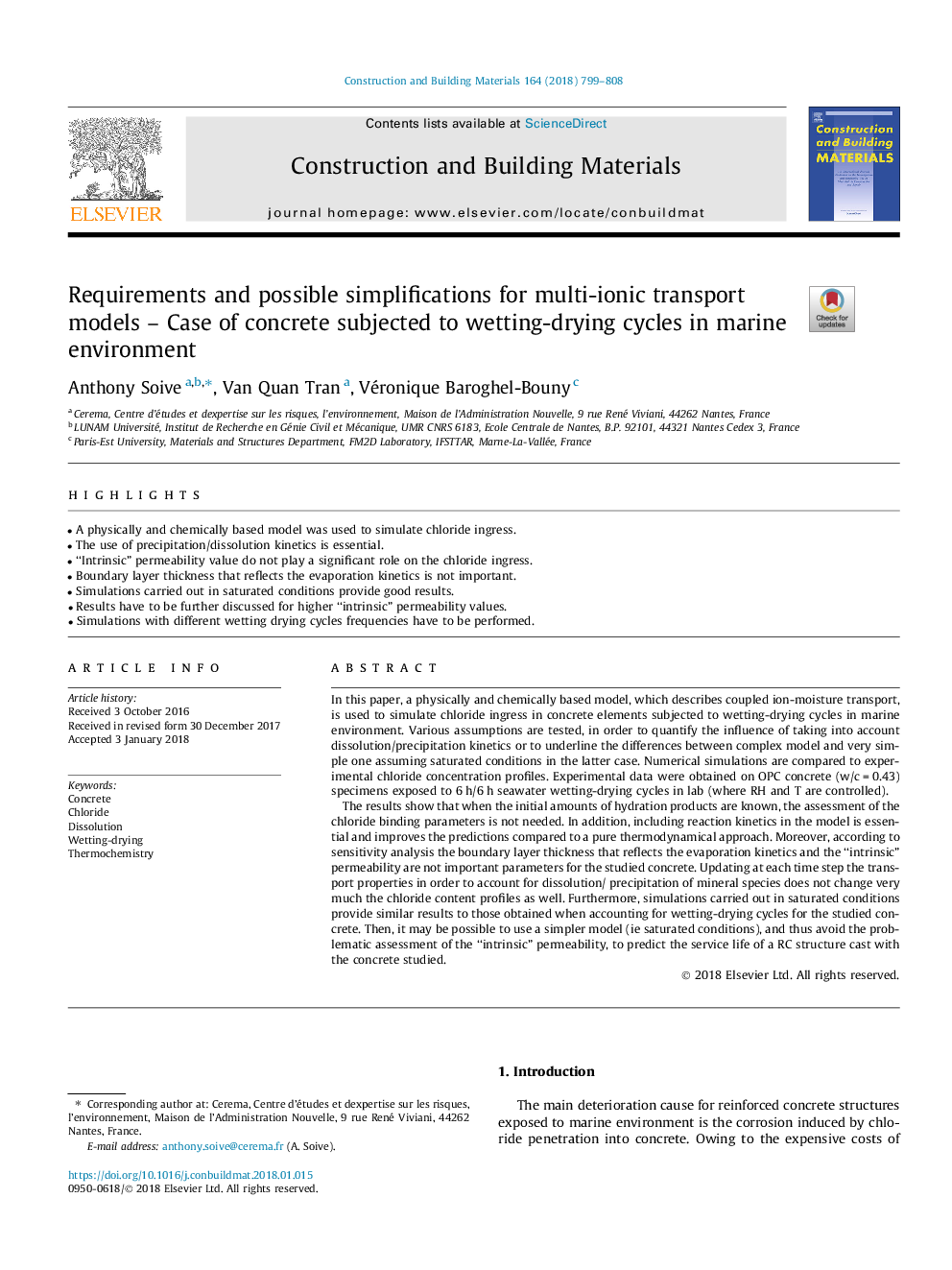| Article ID | Journal | Published Year | Pages | File Type |
|---|---|---|---|---|
| 6716142 | Construction and Building Materials | 2018 | 10 Pages |
Abstract
The results show that when the initial amounts of hydration products are known, the assessment of the chloride binding parameters is not needed. In addition, including reaction kinetics in the model is essential and improves the predictions compared to a pure thermodynamical approach. Moreover, according to sensitivity analysis the boundary layer thickness that reflects the evaporation kinetics and the “intrinsic” permeability are not important parameters for the studied concrete. Updating at each time step the transport properties in order to account for dissolution/ precipitation of mineral species does not change very much the chloride content profiles as well. Furthermore, simulations carried out in saturated conditions provide similar results to those obtained when accounting for wetting-drying cycles for the studied concrete. Then, it may be possible to use a simpler model (ie saturated conditions), and thus avoid the problematic assessment of the “intrinsic” permeability, to predict the service life of a RC structure cast with the concrete studied.
Related Topics
Physical Sciences and Engineering
Engineering
Civil and Structural Engineering
Authors
Anthony Soive, Van Quan Tran, Véronique Baroghel-Bouny,
